Mark Sisson's Blog, page 21
July 26, 2022
Laughter Meditation and Laughter Yoga (Plus a Video!)
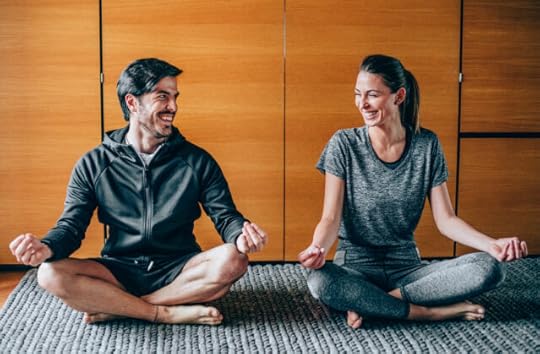 There’s nothing better than a really good belly laugh, the kind that leaves you gasping for breath with tears running down your cheeks. By the time you collect yourself, your whole body is more relaxed, your mood is lighter, everything feels cleansed. You’re probably getting healthier, too.
There’s nothing better than a really good belly laugh, the kind that leaves you gasping for breath with tears running down your cheeks. By the time you collect yourself, your whole body is more relaxed, your mood is lighter, everything feels cleansed. You’re probably getting healthier, too.
Laughter therapies like laughter yoga and laughter meditation have been gaining popularity for the past several decades as methods of improving physical and mental well-being. The benefits of using humor as therapy seem obvious. Unlike asking people to clean up their diets or take medicines with unpleasant side effects, just about everyone is willing to yuk it up to their favorite television show or comedian.
Dr. Madan Kataria, a family physician from India and founder of the laughter yoga movement, was researching the positive effects of laughter on health when he came up with the idea of formally incorporating laughter into a wellness routine. Of course, Dr. Kataria wasn’t the first person to think of using “laughter as medicine.” The practice is probably as old as humanity itself. He did, however, formalize the practice of laughter yoga back in the 90s. Today there are thousands of “laughter clubs” that follow Dr. Kataria’s methods, plus who knows how many other yoga and meditation enthusiasts using laughter to tap into positive emotions, improve mental well-being, and perhaps even improve physical health as well.
You don’t have to convince me about the many benefits of laughter. I could write a whole post about why laughter is a fundamentally human experience and how it helped us evolve into the emotionally complex, socially interconnected beings we are today. (Oh wait, I already did.) It’s also pretty easy to sell me on the concept of laughter meditation or laughter yoga to improve mood and overall outlook on life. As for the grander claims about widespread health benefits? I’m definitely open to the possibility.
Let’s start by looking at some of the rationale and science behind the practices. Then, I asked a couple of my uber-creative team members to demonstrate a simple laughter meditation to get you started.
Laughter Yoga and Laughter MeditationLaughter meditation and yoga share similar features, and just like with any type of yoga or meditation, there’s no single right way to do them. Generally speaking, a laughter meditation session will involve three parts:
Gentle movement and breathing exercises to warm up and settle in.The laughing portion of the meditation, which might last a few minutes or longer. Start by smiling, then break out a few “ho ho hos” or “tee hees.” Faking it might feel awkward at first (although simulated laughter could be just as beneficial as the real thinghttps://pubmed.ncbi.nlm.nih.gov/31029...). Don’t be surprised if you’re soon giggling, even guffawing, for real, especially if you practice with other people. Laughter is contagious, after all.A cool-down period where you sit in silent reflection. As with more traditional meditation, try to be mindful and present. Notice but don’t analyze any feelings that come up for you here. There’s a good chance you’ll feel great, but don’t be surprised if other emotions surface as well. You might also want to do some additional breathwork or gentle movement at this stage.Laughter yoga is more involved. A typical laughter yoga session comprises elements such as deep breathing, movement, chanting, and structured laughter exercises. For example, the instructor might ask you to pretend you are popping laughter pills, each one causing a different type of laughter. Or you might go around the room having conversations with your fellow practitioners, except all the words are replaced by laughter.
To reap the benefits, you must let go of any self-consciousness and get into the (intentional) silliness of it all. Let yourself be childlike and carefree. This is meant to be fun.
Benefits of Laughter TherapyMany of the purported benefits are just what you’d expect: improved mood, more lightheartedness, fewer negative emotions, less stress.
Beyond that, laughter yoga and laughter meditation are both types of laughter therapy, a more clinical term that encompasses various methods of using laughter and humor therapeutically. Some of the ways laughter therapy might help you, according to research, is by:
Lowering cortisolhttps://pubmed.ncbi.nlm.nih.gov/25569... pain and improving physical functioning in older adultshttps://pubmed.ncbi.nlm.nih.gov/27982... sleephttps://synapse.koreamed.org/articles... ">4Alleviating lonelinesshttps://pubmed.ncbi.nlm.nih.gov/30004... depression and anxiety symptomshttps://pubmed.ncbi.nlm.nih.gov/30711...https://www.ncbi.nlm.nih.gov/pmc/arti... cardiovascular healthhttps://www.ncbi.nlm.nih.gov/pmc/arti... inflammation and boosting immune functionArguably, laughter is also a form of exercise. You won’t get ripped sitting on the couch watching your favorite rom-com, but you’ll activate those core muscles and burn a few calories.https://www.ncbi.nlm.nih.gov/pmc/arti... Maybe we should put laughter on the list of microworkouts.
Granted, the studies in this area aren’t of the highest quality. They tend to be small and, as the authors of several recent meta-analyses have pointed out, subject to bias. But do we really need research to prove that laughter feels good and improves quality of life? Sure, if someone is going to make grandiose claims about laughter curing cancer or something, they’d better be prepared to back that up with hard data. Asserting that a laughter meditation will brighten your mood and improve your outlook on life? I’m prepared to accept that hypothesis.
Laughter Meditation VideoNow it’s time for you to give it a try. The video below is only six minutes long, and it’s guaranteed to put a smile on your face.
Try it out, then come back and leave a comment letting me know how you’re feeling!
Need more meditation in your life? Sign up for my 21-day Meditation Challenge HERE.
(function($) { $("#dfingvb").load("https://www.marksdailyapple.com/wp-ad..." ); })( jQuery ); 
References https://pubmed.ncbi.nlm.nih.gov/31029483/https://pubmed.ncbi.nlm.nih.gov/2556917/https://pubmed.ncbi.nlm.nih.gov/27982486/https://synapse.koreamed.org/articles/1058303 https://pubmed.ncbi.nlm.nih.gov/30004172/https://pubmed.ncbi.nlm.nih.gov/30711868/https://www.ncbi.nlm.nih.gov/pmc/articles/PMC6895849/https://www.ncbi.nlm.nih.gov/pmc/articles/PMC2814549/https://www.ncbi.nlm.nih.gov/pmc/articles/PMC2249748/
The post Laughter Meditation and Laughter Yoga (Plus a Video!) appeared first on Mark's Daily Apple.
July 22, 2022
New and Noteworthy: What I Read This Week—Edition 186

Research of the Week
The serotonin theory of depression is on shaky ground (again).
Eating dairy reduces fracture risk in elderly people.
Latvia, Russia, and South Asia have the most belief in luck and precognition; Protestant Europe the least.
For true COVID recovery, look to the gut.
Rapidly increasing vitamin D status for controlling sepsis, infection, immune function.
New Primal Kitchen PodcastsPrimal Kitchen Podcast: Anxiety Expert Mark Metry Gives Advice on Being Your Best Self
Primal Health Coach Radio: Yours Truly
Media, SchmediaNitric oxide nasal spray destroys viral load in active COVID cases.
Interesting Blog PostsDo hot drinks really cool you down more than cold drinks?
Rapid injury recovery with DMSO, Vitamin C, and Magnesium
Social NotesA captain goes down with the ship.
Everything ElseMany places are getting greener with forests getting thicker.
Be careful, there’s such a thing as too much of anything.
Things I’m Up to and Interested InFascinating stat: Where is there more livestock than people?
Interesting finding: Take care of animal health and the rest works itself out.
Nice biomarker to track: The triglyceride/blood glucose index for atherosclerosis risk.
Interesting tech: Wearable AC.
Uh oh: Is the amyloid plaque theory of Alzheimer’s in trouble?
Question I’m AskingWhat’s something you love doing but don’t do enough? What’s stopping you?
Recipe CornerBraised mustard green recipe. Just swap out the vegetable oil.Oven baby back ribs.Time CapsuleOne year ago (July 16 – July 22)
Home Gym Setups at Different Price Points —How to set up your gym.Help! I Can’t Stop Snacking—Big problem.Comment of the Week
“I’m reminded of a Calvin & Hobbes comic. Calvin was asking whether nothing matters, then considered that instead everything matters.”
-Bill Watterson is a great American philosopher.
(function($) { $("#dfcOr6H").load("https://www.marksdailyapple.com/wp-ad..." ); })( jQuery ); 
The post New and Noteworthy: What I Read This Week—Edition 186 appeared first on Mark's Daily Apple.
July 20, 2022
7 Ways to Boost Injury Recovery
Just like recovery is the most important part of training—it’s how we get stronger, how we get fitter, how we get faster—recovering from injuries is the most important part of the injury healing process.
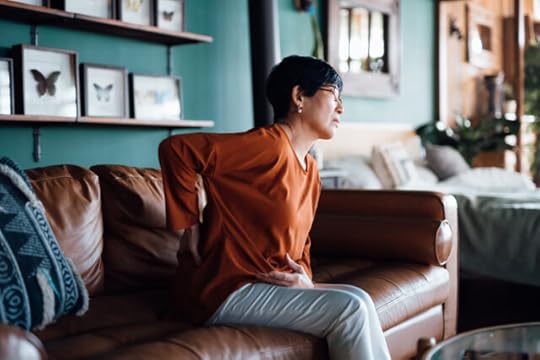 If you get injured, your average health care professional will tell you that “the body will take care of itself.” They’ll say to “eat healthy” and “rest up” and “take ibuprofen.”
If you get injured, your average health care professional will tell you that “the body will take care of itself.” They’ll say to “eat healthy” and “rest up” and “take ibuprofen.”
But is that really the best way to recover from an injury? Hell no. You have far more agency than that. You can actively and effectively improve your healing and come back quicker, stronger, and better than ever with clinically-proven strategies and interventions. Here are some of my tips for recovering from an injury.
Practice slow eccentricsIf you have a tendon or ligament issue, one thing you can do—nay, must do—is slow eccentrics. An eccentric is lowering the weight; concentric means raising the weight. Slow eccentrics involve lowering the weight at a slow pace to really lengthen and emphasize the afflicted connective tissues.
Slow, low weight eccentrics is the gold standard for healing any connective tissue strain or sprain. For example, if your bicep tendon is sore, do really low weight eccentric curls.
Keep movingMovement helps you heal for several reasons:
It clears out damaged tissue and proteins from the afflicted area.It pushes healing compounds and blood into the afflicted area.It tells your nervous system that you are recovering—otherwise, how would you be moving the “injured” tissue?But here’s the thing: you have to move well. You can’t be limping around. You can’t be suffering through your movement. You have to do clean, crisp movements that are as close to perfect as you can do. If you sprain your ankle, for example, you want to start walking on that ankle with perfect form as soon as you can. This probably means going really, really slowly, but that’s how it has to happen. Go as slowly and deliberately as you must to maintain perfect technique.
If you can’t move well, don’t move. But movement can be as easy as flexing and extending your knee while you lie in bed, rotating your ankle, or doing windmills with your arms. It doesn’t take much. Just move and maintain movement quality.
Use red light therapyRed light is probably the latest and greatest in injury recovery. From what I can tell, it is a strong general booster of healing—against pretty much everything. Below are some of the benefits red light therapy has provided.
Patients with knee osteoarthritis used red light therapy to reduce pain scores and increase microcirculation in the knee. That could mean actual healing.Literature reviews have concluded that red light therapy does reduce joint pain, even in chronic joint disorders.Red light exposure increases blood flow to the skin and improves fracture healing.It’s even been shown to improve neuropathic pain. No “physical” damage necessary.It’s even effective against sunburn, especially if you use it before sun exposure.You can get this kind of light by exposing your skin to sunlight at all hours of the day, particularly morning and sunset for infrared. But to heal an injury, you might want to focus on directed high power light using a red light or infrared light device. You can do this in clinics but I’d recommend just picking one up for yourself. You can buy the Joov, which I have and enjoy, or something like this.
Get sleepPatients who get the most sleep when recovering from injuries recover quicker. This was probably the single most ubiquitous factor in all my years running, cycling, swimming, and competing in endurance sports. Those of us who slept the most recovered from our injuries the quickest.
Hell, sleep deprivation is a common method for studying agents that improve injury recovery in studies. They injure the animal, don’t let them sleep, and then see what experimental drugs or interventions they can use to speed up the healing process. The notion that sleep deprivation slows down healing time isn’t even a question anymore. It’s assumed. It’s fact.https://pubmed.ncbi.nlm.nih.gov/31475...
This means that if you are injured, you need to sleep at least 8 hours ,and probably more. Recall that elite college athletes who sleep an extra two hours a night see better recovery and performance, and realize that recovering from injury and training is simply a matter of degree. It’s all the same pathways.
Eat more proteinWhen you’re actively healing and recovering and laying down or repairing tissue, you need extra protein to handle the extra processes and provide substrate for the new tissue. Burn victims, for example, heal quicker when they eat more protein.https://archive.unu.edu/unupress/food...
Eat a good 1 gram protein per pound of lean body mass as you recover. Consider including whey isolate, as it’s an easy additive source of protein that’s been shown to improve recovery after bed rest and surgery.https://pubmed.ncbi.nlm.nih.gov/30689...
Consume collagenCollagen is a type of protein, but it’s not what most people think of when they think about protein. Nor is it present in most sources of protein. No, if you want collagen, you need to be drinking bone broth, eating connective tissue and skin, or supplementing with it through gelatin or collagen hydrolysate.
Incorporate omega-3s and seafood in your dietLong chain omega-3s have a potent anti-inflammatory effect that can improve your recovery and speed up your return to normal activity after injury. They reduce pain and inflammation without curtailing the healing process, unlike pharmaceutical anti-inflammatories. One study even found that high dose omega-3 intake increased physical activity, maintained physical function, and reduced the incidence of joint replacement in older adults.
The long chain omega-3s also increase muscle protein synthesis, particularly in older adults (presumably with higher baseline inflammation levels).https://pubmed.ncbi.nlm.nih.gov/21159... They’ll make you better at utilizing the protein you eat for the purposes of healing and laying down new tissue.
Let me know if you try any of this tips and what you do to help boost recovery after injuries.
(function($) { $("#dfK5XUK").load("https://www.marksdailyapple.com/wp-ad..." ); })( jQuery ); 
References https://pubmed.ncbi.nlm.nih.gov/31475167/https://archive.unu.edu/unupress/food2/UID07E/UID07E1E.HTMhttps://pubmed.ncbi.nlm.nih.gov/30689727/https://pubmed.ncbi.nlm.nih.gov/21159787/
The post 7 Ways to Boost Injury Recovery appeared first on Mark's Daily Apple.
July 19, 2022
9 Ways to Stay Healthy When Working Remotely
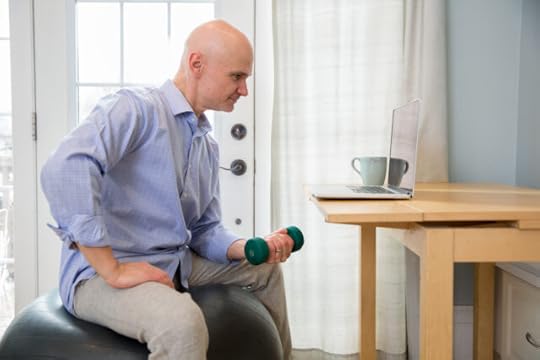 Love it or hate it, remote work is here to stay. The old model of reporting to cubicles or corner offices from 9 to 5 is out. Collaborating with far-flung colleagues from the comfort of your bedroom is in.
Love it or hate it, remote work is here to stay. The old model of reporting to cubicles or corner offices from 9 to 5 is out. Collaborating with far-flung colleagues from the comfort of your bedroom is in.
Chances are, if you work from home you love it. While some folks miss water cooler banter and lunch breaks with coworkers, poll after poll finds that people report being more productive at home. Job satisfaction is higher. Work-life balance is exponentially better.
This forced social experiment has shown that the old office-centric way wasn’t necessarily the best (more conventional wisdom bites the dust). But that doesn’t mean there aren’t downsides to the new hybrid or work-from-home models either. Social isolation is a real concern. So is the blurred line between personal time and work time, plus the loss of built-in daily structure. Some folks are just sick of the inside of their homes and, frankly, the people they live with.
Overall, I think it’s easier to be healthy when working from home. If for no other reason, people have more time. When the pandemic forced offices to shutter, a survey from the Becker Friedman Institute at the University of Chicago estimated that American workers saved more than 9 billion (yes, billion) hours not commuting between March and September of 2020.https://bfi.uchicago.edu/insight/find... That’s in only six months. Now extrapolate that to today, and consider that commuting consistently ranks among the top modern stressors and health hazards.
Still, for the reasons mentioned and more, at-home workers face unique challenges that can eat away at physical and perhaps especially emotional health if they’re not careful. Here’s what I’d do to mitigate that risk.
Make It Stupid Easy To MoveOne of the biggest problems with remote work is how easy it is to sit at your computer all day every day. No need to leave your house or even get out of your pajamas. Suddenly it’s dinnertime, and you’ve barely taken a hundred steps, let alone sprinted or lifted heavy things.
Any behavior change expert will tell you that the first step for building new habits is to hit yourself over the head with cues to get it done:
Leave your kettlebell in the middle of the floor where you’ll literally trip over it on the way to the bathroom.Keep a resistance band next to the coffee maker.Schedule movement breaks into your calendar and enable notifications.Create a sit-stand workspace. Make a game of adopting as many different positions as you can throughout the day. Sit on the floor, stand, kneel, lean. Bounce on an exercise ball or rebounder. Use a balance board or wobble stool. Stand on one foot, then the other.Invest in an under desk cycler or treadmill.Sign up for my microworkout challenge to get a daily email reminder to move, plus a different exercise to try.Challenge your coworkers to complete a certain number of walking meeting minutes each week. Hold each other accountable.Make it harder to ignore all the cues than it is to get moving.
Set Boundaries Around Your TimeYour boss and coworkers won’t know if you take a break in the middle of the day to mow the lawn, take the kids to the park, run to the gym, or take a nap. That part is great. Unfortunately, though, when your home is your workplace, you’re constantly at work in a sense. Nobody is going to protect your time but you.
First and foremost, do your best to keep regular work hours. Don’t start working first thing in the morning. Don’t open your email or check your calendar or anything else until you’ve had the chance to rise, move your body a little, and get into a good headspace for the day.
Likewise, don’t work late at night. Besides the fact that you shouldn’t be looking at screens right before bedtime, you need time to wind down and let go of any stress from the day. When work-related anxiety keeps you up, rather than giving in and working another couple hours, do a brain dump. Get out a piece of paper and write down all the things you’re worried about. Make a to-do list for the following day and pick the two or three things you’ll tackle first tomorrow.
I’ve beat this drum before, but take frequent work breaks during the day. Five or ten minutes every half hour or so and a longer break every couple of hours.
Use your vacation time. Staycations are all well and good, but try to get out of your home/work too. Don’t bring your laptop.
Stay HydratedDehydration decreases focus, processing speed, and productivity, so drink up. Don’t force it, obviously, but be mindful about drinking to thirst.
Here’s a little movement hack. Every time you go to the kitchen to get a drink, use that as a cue to change your position. If you were sitting before, switch to standing when you get back. Do a set of push-ups while you’re at it.
Watch Your Caffeine IntakeI love coffee as much as the next guy. No doubt, though, you can overdo it. There’s no need to quit coffee entirely, but take care not to use caffeine as a crutch.
Eat Proper MealsAvoid the temptation to work through breakfast and lunch. You’ll digest your food better when you’re in a parasympathetic state. That means no checking emails or working on a slide deck for tomorrow’s meeting while you eat. Close your laptop, put your phone on the charger, and take half an hour to prepare and eat a meal without stress or distraction. Bonus points for eating outside.
Also avoid the temptation to graze all day, which is easier to do when you’re working a stone’s throw from your well-stocked kitchen. If you’re hungry, eat a meal. If you don’t want a meal, you’re not really that hungry.
Leave Your Home Every DayTake your laptop to a park or coffee shop for a change of scenery. Go for a walk. Go for several walks. Walking meetings are one of my favorite ways to incorporate more daily movement, but make sure you find reasons to leave your work at home, too.
Speaking of which…
Manufacture NoveltyIf you’re one of those people who went to an office pre-pandemic, working from home was probably its own novel experience for a while. At some point, though, the luster fades, and you start to feel like you’re living your own personal Groundhog Day. Nothing ever really changes.
Your brain craves novelty. Read a new genre of fiction. Take an online course in a topic you’ve always wanted to learn more about (ideally one that has nothing to do with your profession). Buy a new ethnic cuisine cookbook and work your way through it. Go camping somewhere you’ve never been before.
Buy a Houseplant (Or Three)I know, I know, it’s cliché at this point. You probably procured several houseplants months ago, gave them names, and talk to them on the regular. If you haven’t jumped on this bandwagon, what are you waiting for? Houseplants offer a host of benefits for mood, productivity, and workplace satisfaction.
Have a Creative OutletMusic is mine, but it doesn’t really matter what you do as long as you have a way to express yourself. “All work and no play” isn’t just a trite platitude. It’s an evolutionary truism, not to mention one of the ten Primal Blueprint laws. Play includes art, music, dance, all manner of self-expression that gets creative and emotional juices flowing. The act of creating provides a necessary counterbalance to the more rigid, “serious” work of, well, work.
That’s what I have for today. What would you add to this list?
The post 9 Ways to Stay Healthy When Working Remotely appeared first on Mark's Daily Apple.
July 18, 2022
Turkey Bacon Spinach Wrap
Looking for your next lunch-time meal? Then look no further because our turkey bacon spinach warp is perfect for those busy work days.
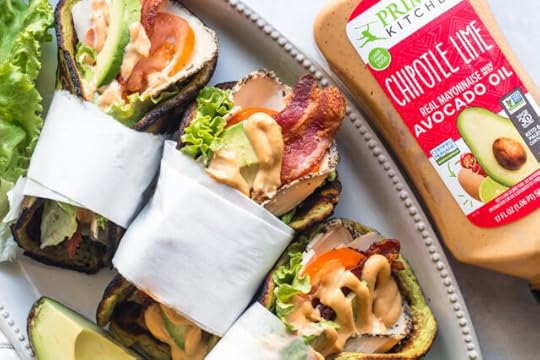
Our homemade spinach wraps are also grain-free, making it ideal for anyone following a paleo or primal diet. We recommend a few filling ideas in this recipe, including topping the wrap with Primal Kitchen’s Chipotle Mayo, but you can easily substitute ingredients for whatever else you may have on hand. This recipe is just what you’ll need to keep finishing out the day strong!
How to make Paleo Spinach WrapsFor these paleo-friendly wraps we utilized plantains and almond flour. Either green or yellow plantains will work for this recipe, but we recommend more green/less ripe plantains to keep the wrap savory and help it hold together better. The batter will be thick but that helps hold all the delicious ingredients.
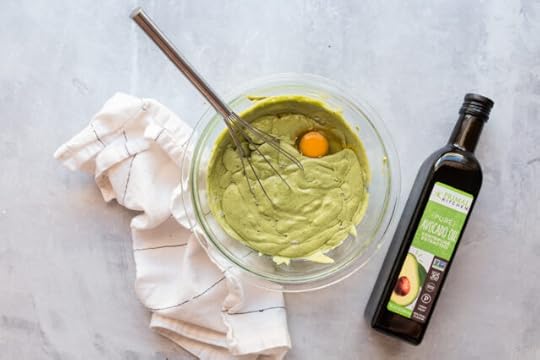
Once the batter is prepared heat a cast iron skillet on your stovetop over medium heat. Once hot, add 1-2 teaspoons of oil. Since the batter is thick the easiest way to spread it out in a circular shape is to lightly press the dollop of batter up and down with the back of a spoon to flatten and spread out the batter into a round shape about 5-6 inches in diameter. Do this quickly so the batter spreads out before it starts cooking. After about 1 minute, the batter will be bubbly and the underside will start to brown.
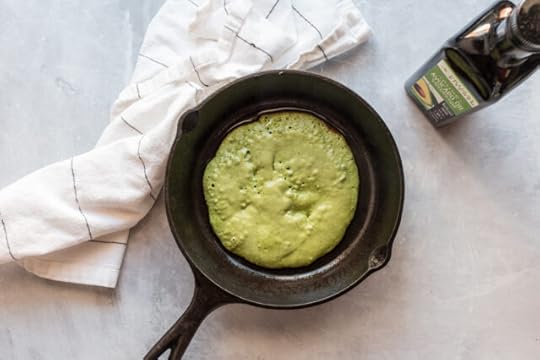
Once this happens, flip the wrap over and let cook until the wrap is set. Repeat with the remaining batter. This recipe will make 6 wraps and can be topped with a variety of fillings.
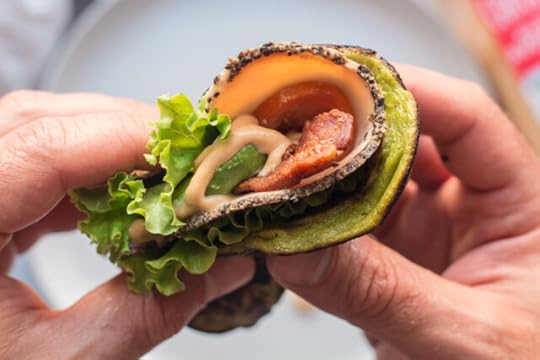
(function($) { $("#dfEMLVA").load("https://www.marksdailyapple.com/wp-ad..." ); })( jQuery ); 
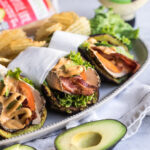 Turkey Bacon Spinach Wrap Author: Priscilla Chamessian
Turkey Bacon Spinach Wrap Author: Priscilla Chamessian  Total Time: 15 minutes
Total Time: 15 minutes  Yield: 6 Diet: Gluten Free [image error] Print Recipe [image error] Pin Recipe Ingredients
Yield: 6 Diet: Gluten Free [image error] Print Recipe [image error] Pin Recipe Ingredients 2 plantains (aim for green or less ripe)
1.5 cup fresh baby spinach
½ cup almond flour
¼ cup Primal Kitchen Avocado Oil (plus more for frying)
1 teaspoon lemon juice
2 eggs
Pinch of salt and pepper
Filling ideas:
Thinly sliced roasted turkey breast
Bacon
Sliced tomato
Lettuce leaves
Sliced avocado
Primal Kitchen Mayo or Chipotle Mayo
Your favorite chip or cracker
Instructions In a food processor or blender, blend together the plantain, spinach, almond flour, oil and lemon juice.Pour into a bowl and whisk in the egg and salt and pepper. Heat a cast iron skillet on your stovetop over medium heat. Once hot, add 1-2 teaspoons of oil.Spoon out a portion of the batter and place it in the skillet. The batter will be thick so the easiest way to spread it out in a circular shape is to lightly press the dollop of batter up and down with the back of a spoon to flatten and spread out the batter into a round shape about 5-6 inches in diameter. Do this quickly so the batter spreads out before it starts cooking. After about 1 minute, the batter will be bubbly and the underside will start to brown. Once this happens, flip the wrap over and let cook until the wrap is set. Repeat with the remaining batter.On your wrap, layer a couple of slices of turkey, a piece of bacon, tomato, lettuce, and avocado. Drizzle the mayo on top. Wrap it up to eat and serve with your favorite chip or cracker. NotesYou can use green or yellow plantains for this wrap. We recommend more green/less ripe plantains to keep the wrap savory and help it hold together better.
Make sure your skillet is well seasoned and there is enough oil in it before adding the batter. This will keep the wrap from sticking to the pan and falling apart.
 Prep Time: 10
Prep Time: 10 Cook Time: 5
Cook Time: 5 Category: Meal Nutrition Serving Size: 1 Calories: 264.7 Sugar: 2.6g Sodium: 55.1mg Fat: 15.6g Saturated Fat: 2g Trans Fat: 0g Fiber: 3.4g Protein: 5.2g Cholesterol: 62.2mg Net Carbs: 23.73g
Category: Meal Nutrition Serving Size: 1 Calories: 264.7 Sugar: 2.6g Sodium: 55.1mg Fat: 15.6g Saturated Fat: 2g Trans Fat: 0g Fiber: 3.4g Protein: 5.2g Cholesterol: 62.2mg Net Carbs: 23.73g Keywords: spinach wrap
 Did you make this recipe?
Did you make this recipe? Share a photo and tag @marksdailyapple — we can't wait to see what you've made!
The post Turkey Bacon Spinach Wrap appeared first on Mark's Daily Apple.
July 15, 2022
New and Noteworthy: What I Read This Week—Edition 185

Research of the Week
Eating more protein during weight loss improves diet quality and helps retain lean mass.
Less microbial diversity, more severe COVID.
Cardamom for insulin resistance.
More saturated animal fat, fewer non-communicable diseases.
Japanese pickle consumption linked to lower blood pressure.
New Primal Kitchen PodcastsPrimal Kitchen Podcast: Living More With Less—Chatting Consumerism with the Minimalists
Primal Health Coach Radio: Chris Masterjohn
Media, SchmediaSome places are still getting strict…
Interesting Blog PostMetabolic reasons to do HIIT.
Social NotesI’ll stick with avocado oil, thanks.
Everything ElseDid you know that dolphins choose their names? .
Gluten-free restaurant guide for Kauai.
Interesting piece on an Argentine forest community.
Things I’m Up to and Interested InAbout time: People are making their own shampoo.
Interesting finding: In people with fatty liver, eating 6+ servings of fruit (often dried) and increasing calorie intake are bad ideas.
A safe assumption: Resistance is forming.
Interesting development: Mini nukes coming to Canada.
Interesting research: On the perpetually lean.
Question I’m AskingWhat are you doing this weekend?
Recipe CornerIf you love peanut butter, try this protein shake.Roman style braised artichoke.Time CapsuleOne year ago (July 9 – July 15)
Incredible Benefits of Barefoot Workouts —Why to do them.Why Am I So Hungry After Exercise?—Well, why?Comment of the Week
“My husband is an international airline pilot, they have steam ovens on their planes. He brings sardines, beef jerky, nuts, etc. with him on his fights. We do not eat airport food. I am a Functional Nutritional Therapy Practitioner, and we practice fasting and drink water w/Himalayan salt during travel days and regularly cook our own foods when we are vacationing and camping. Please choose wisely, people. Your whole future is counting on it.”
-Wise words.
(function($) { $("#dfz1MFQ").load("https://www.marksdailyapple.com/wp-ad..." ); })( jQuery ); 
The post New and Noteworthy: What I Read This Week—Edition 185 appeared first on Mark's Daily Apple.
July 14, 2022
Ask a Health Coach: Eating Primal on Your Period
Hey folks, Board-Certified Health Coach Chloe Maleski is here to answer your questions about what to eat when PMS’ing or on your period. Struggle with cravings during that time of month? We’re here with guidance and support! Have a question you’d like to ask our health coaches? Leave it below in the comments or over in the Mark’s Daily Apple Facebook group.
Daniella asked:
“Any advice for eating Primal when I’m on my period or PMS’ing? I do fine the rest of the month but get ravenous and hangry the week before my period and crave all the carbs. Then, during the first two days of my period, I just want to comfort myself with junk food.”

Great question, Daniella. The female reproductive cycle has a huge impact on our hormonal system, metabolism, and nutritional needs. This is yet another reason why there is no “one-size-fits-all” approach to healthy eating and living. The optimal diet not only differs from person to person, but also for each individual depending on circumstances and wellness goals. Factors such as time of month, time of year, phase of life, health conditions, and activities all have an impact on appetite, cravings, and nutritional needs.
As women, our monthly cycle offers a wonderful barometer and starting place for touching into those needs and how they shift. While this may be most obvious for women who have a regular menstrual cycle, it’s also true for those who have entered perimenopause, menopause, and post-menopause.
Some great news for all those phases of life: Primal eating sets you up to thrive and goes far to eliminate or reduce unwelcome changes such as slower metabolism, extra weight gain, and sugar and carb cravings. Indeed, many symptoms widely considered to be “just PMS,” “just genetics,” or “just part of aging,” are not predetermined at all! Sure, the hormonal and other changes that accompany our reproductive cycle are very real. Same goes for changes in that cycle over a lifespan and the impact of genetics on that process.
Thing is though, any symptoms are a sign of underlying imbalance in our body-mind ecology. Such imbalances are not simply the result of genetics or “what happens to us.” Our eating and lifestyle choices are a major contributing factor. This doesn’t mean we can fix everything through Primal eating and living. It does mean that we have way more power and agency than many realize. Choices and habits, over time, either align with our biology and allow us to thrive…or work against it, and against ourselves.
PMS, Period Symptoms & DietWhat’s this have to do with PMS and period symptoms? A lot! I suspect you already know this, which is why you’re here: Eating Primal, asking questions, wondering how you might fine-tune the “self-experiment” that is you.
As your question implies, we do not need to simply accept sweet cravings or other PMS and period symptoms as “the way it is.” Indeed, as a Primal Health Coach, many of my female clients report success in reduction or elimination of PMS and period symptoms after sticking with a Primal diet consistently for 21 days. Consistency is key here—particularly when it comes to seeing the most significant, most sustained outcomes.
This doesn’t necessarily mean that you never eat food outside of Primal parameters. But to see the biggest results, sticking with the true spirit of the 80-20 rule is pivotal. In other words: Aim to eat real, whole Primal food 100 percent of the time while recognizing that life circumstances sometimes get in the way. Occasional off-roading won’t derail your wider efforts (so long as it truly is occasional); simply re-set and recalibrate by returning to Primal meals.
Eating Primal and still feeling PMS’y? You’re not alone and that doesn’t mean you’re doing anything wrong. Some women do stay 100 percent Primal and still experience intense hunger, sugar and carb cravings, moodiness, and other symptoms before and during their period.
One reason for this is the impact of changing hormones. During menstruation, a woman’s serotonin levels are at their lowest.1 Carbohydrates increase the availability of the primary amino acid precursor to serotonin: tryptophan.2 In simple terms, this means craving carbs during your period is totally natural! It may also indicate that you are low in serotonin, and your body wants more of it.
This does not mean eating all the carbs will help, however—loading up on grains and sugars will likely make symptoms worse.
Still, the days leading up to menstruation may be the perfect time to increase consumption of healthy Primal carb sources. Think: yams, squash, potatoes, fruit, and moderate amounts of dark chocolate.
Turns out, our body is primed to do exactly that during the mid-luteal phase of our cycle, two weeks before menstruation. Estrogen dominates at that time, and we are optimized for glycogen storage.3
Yet again, our body’s innate intelligence for the win! Our job is to listen and, to the extent possible, adjust eating and lifestyle patterns to support and align with biology.
Of course, if your symptoms are particularly intense or even debilitating, you’ll want to check with your doctor or another licensed medical practitioner to troubleshoot other potential causes or underlying conditions. This doesn’t mean they’ll find anything wrong—but getting as much information as possible allows you to make the best-informed decisions.
You’re Not (Only) What You EatIf you’re doing the above and still experiencing PMS and period symptoms, remember that Primal eating is only one aspect of the 10 Primal Blueprint Rules. Other key ones here include:
Get plenty of sunlight.Get plenty of sleep.Move frequently.Sprint once in a while (probably outside of period time, when your energy isn’t lagging).I realize the last one, in particular, isn’t the most popular advice. But before you rule it out, give this a read and know that “sprinting” doesn’t look the same for everyone and is way easier and more accessible than you might think!
It also tends to move the needle when it comes to overcoming stubborn plateaus in hormonal and metabolic symptoms. Consider sprint sessions during times of the month when your strength and energy are at their highest. Then, come period time, shift into regular, daily movement that doesn’t leave you fatigued.
More generally, the above “rules” have a huge impact on our hormonal ecology, as do stress levels. If you’re eating Primal and still getting PMS or period symptoms, look there. Troubleshooting PMS and period cravings can be as simple as shifting to a Primal diet and upping your Primal carbs, getting enough sleep and sun, and moving your body in healthy ways.
That said, everyone is unique and your perfect protocol won’t look like everyone else’s. For custom-made support, consider working with a Primal Health Coach one-on-one! We can help you get clear on what diet approach and lifestyle practices are best for you. Visit myprimalcoach.com to learn more and get started!
Do you crave certain foods when PMS’ing or on your period? Has this changed since going Primal? Let us know and drop other questions for me in the comments!
(function($) { $("#dfebShM").load("https://www.marksdailyapple.com/wp-ad..." ); })( jQuery ); 
References https://pubmed.ncbi.nlm.nih.gov/13949...
The post Ask a Health Coach: Eating Primal on Your Period appeared first on Mark's Daily Apple.
July 13, 2022
Is Technology Causing ADHD?
Attention Deficit Hyperactive Disorder is a common issue. While rates seem to have leveled off in the past decade, they haven’t decreased—and they’re still higher than historical norms. As with any health condition that seem to “appear” all of sudden across society, we have to wonder if something about the modern world is triggering a rise in ADHD. Plenty has been written about diet and other relevant environmental inputs that have changed in recent decades. What about another, arguably more recent shift—technology? Does technology increase or worsen ADHD? To answer that, we have to go back. We have to look at Attention Deficit Hyperactive Disorder in an ancestral context.
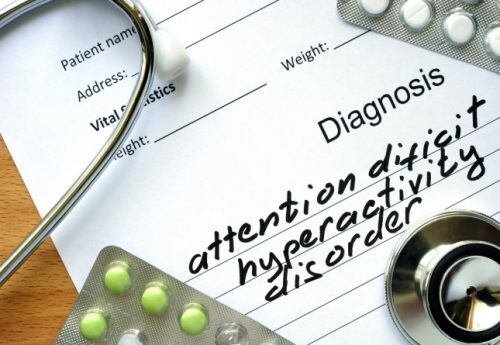
A 2008 study found that among two rural tribes of Kenya—one nomadic, one settled in villages—those with genetic signatures of ADHD living in the nomadic (and more ancestrally aligned) group were more successful, having higher body weights and more lean mass (muscle). Their genetic drive actually improved their ability to contribute to the group and succeed in the nomadic, hunting, and foraging environment, whereas in the settled group those with ADHD signatures were lighter and less nourished.https://pubmed.ncbi.nlm.nih.gov/18544...
What is this genetic signature? It’s a variant of the dopamine 4 receptor—DRD4-7R—that dulls the intracellular response to dopamine in carriers. What’s dopamine have to do with ADHD? Dopamine is often called the pleasure neurotransmitter, but it’s really the motivation neurotransmitter. Dopamine is a wanting chemical that compels us to seek, do, move, to make things happen. To do so, it triggers reward pathways in the brain using other chemicals.
When you “win” at anything, you get a hit of dopamine. The hit of dopamine is intended to perpetuate the action that got you the victory. It’s supposed to keep you pushing forward to greater wins and greater rewards despite turmoil and difficulty. For instance, dopamine raises the fatigue threshold during intense exercise.https://pubmed.ncbi.nlm.nih.gov/29069... It actually makes you stronger and more resistant to suffering and hard times, and not just in exercise but in business, hobbies, everything that requires effort.
This is where ADHD comes in. If dopamine isn’t as “effective” in a person with ADHD, they have trouble pushing through the drudgery and the early tough moments to see something through, whether it’s studying, writing a paper, or following through with an idea for a business.
The genetic signature in question increases a person’s drive toward novelty, thrill-seeking, and even food and substance abuse issues. In other words, it pushes them toward “easier wins.” This drive makes sense in a hunting and gathering setting where you have to be willing to expose yourself to dangerous situations, explore new locations, and relentlessly pursue food and sustenance. There are a lot of moving parts out in the wilderness, and the tasks you have before you are acutely stressful and intense. They’re closer to video games than studying for an exam.
That’s why the Kenyan nomads with ADHD signatures did so well and the Kenyan villagers with ADHD signatures did not: the nomadic environment is set up for ADHD and settled life is not. Consider consumer technology in the modern industrial world instead of rural Kenya or America in 2022. Consider what outlets a kid with ADHD would have had access to years ago and what he has access to now. How can a kid direct his or her energy today compared to 30 or 30,000 years ago?
30,000 years ago: Nature, foraging, hunting, exploring the surroundings, swimming, climbing, fighting, playing, learning about plants, making tools.30 years ago: TV, video/computer games, classmates, friends, outside unstructured play, sports.Today: social media, smartphones, computers, tablets, TV, video/computer games, inside play, multiplayer games, playdates, travel sports.Technology and ADHDToday, you’d be hard pressed in many areas to find kids playing outside, let alone kids playing without any adult supervision. Their lives are manicured and curated. They have fewer “natural” outlets for their attention and far more artificial or technological outlets. And those technological outlets like video games and social media and smartphones are engineered to trigger the kind of “easy” dopamine hits that people with ADHD are so attracted to.
It’s probably not that tech increases ADHD. It’s that for kids with ADHD or a predisposition toward it, technology and social media create a self-reinforcing outlet, an easy source of dopamine without much effort, that can lead to ruin. Tech can certainly worsen ADHD. Technology use, especially at nighttime, has been shown to worsen sleep quality and quantity. This effect is pronounced in kids with ADHD. How much sleep a person gets has a direct link to ADHD symptoms.https://pubmed.ncbi.nlm.nih.gov/34049... Technology use is also replacing physical activity, another risk factor for ADHD. The less you move, the less you play, the less you engage in intense physical activity, the more likely your ADHD is to express itself.
And as with anything, the problem with ADHD is how it expresses itself. Are you ignoring all responsibilities in life and playing an open world RPG video game for 15 hours straight as your life crumbles around you? That’s a problem. Are you playing an open world RPG video game for 15 hours straight while thousands of paying subscribers watch you? That’s a little different. You’re doing something you love and making income off of it. The material issues with excessive artificial light exposure and staying inactive sitting on a couch and avoiding any natural light still apply, but the life outcome result of being a video game streamer is superior to the outcome of just being a gamer.
As you can see, there’s a lot of nuance here. How ADHD is expressed differs a lot, even if it looks the same to an outsider. One major misconception of ADHD is that it prevents you from focusing on anything. No, what it does is make it harder to focus on anything that doesn’t grab you. If there’s drudgery involved, if it’s a slog, someone with ADHD will have trouble sticking with it. Remember how dopamine helps people endure tough situations, like in intense exercise? If dopamine doesn’t hit as hard (as happens with many people who have ADHD), drudgery will be harder to endure. Someone with ADHD can go into hyper focused mode if they’re really engaged with something.
The problem is that drudgery is part of life. Many things worth doing and worth learning require some level of drudgery before they start getting interesting or paying off. Technology, to sum up, can worsen ADHD and make overcoming that drudgery to get to the good stuff much harder:
It can interfere with sleep, and sleep deprivation is a risk factor for ADHD.https://pubmed.ncbi.nlm.nih.gov/27461... can be too easy a dopamine outlet, taking focus away from more meaningful and productive pursuits.https://pubmed.ncbi.nlm.nih.gov/22610... can take up quality time a person would otherwise spend being physically active, which has been shown to improve cognitive and executive function in ADHD.https://pubmed.ncbi.nlm.nih.gov/25561...People with ADHD want action. They need acute bouts of intense activity and engagement. That used to happen all the time in the real world simply as part of growing up and living. In today’s more indoor, curated, low-energy, arguably neutered lifestyle, real life action is hard to come by. The most reliable way now for your average person with ADHD to get the same mental fix is through technology: video games, social media, Youtube, TikTok, messaging apps.
That’s the hurdle you have to leap to lessen the negative effects of technology in ADHD. You need to bring adventure back into your life. You need physical activity. You need competition. You need intensity and, perhaps even a little danger.
Do you have ADHD or know someone who does? How has technology affected their outcomes?
(function($) { $("#dffhPtU").load("https://www.marksdailyapple.com/wp-ad..." ); })( jQuery ); 
References https://pubmed.ncbi.nlm.nih.gov/18544160/https://pubmed.ncbi.nlm.nih.gov/29069229/https://pubmed.ncbi.nlm.nih.gov/34049043/https://pubmed.ncbi.nlm.nih.gov/27461837/https://pubmed.ncbi.nlm.nih.gov/22610946/https://pubmed.ncbi.nlm.nih.gov/25561359/
The post Is Technology Causing ADHD? appeared first on Mark's Daily Apple.


July 12, 2022
What is Seed Cycling?
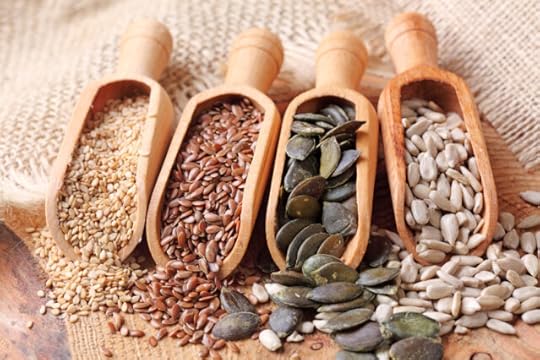 Spend time hanging around alternative health spaces, and you’ll undoubtedly come across seed cycling. This popular protocol aims “balance women’s hormones” and help with all sorts of issues related to sex hormones and the menstrual cycle. Proponents use seed cycling for everything from PMS symptoms, dysmenorrhea (painful menstruation), and irregular cycles to PCOS, infertility, ovarian cysts, and menopausal symptoms like hot flashes and night sweats.
Spend time hanging around alternative health spaces, and you’ll undoubtedly come across seed cycling. This popular protocol aims “balance women’s hormones” and help with all sorts of issues related to sex hormones and the menstrual cycle. Proponents use seed cycling for everything from PMS symptoms, dysmenorrhea (painful menstruation), and irregular cycles to PCOS, infertility, ovarian cysts, and menopausal symptoms like hot flashes and night sweats.
Testimonials abound from women who credit seed cycling with changing their lives. No shortage of holistic doctors, naturopaths, dietitians, and bloggers promote it as a helpful tool, or even a miracle cure, for women. There are also plenty of skeptics.
While it’s great to keep an open mind, we also want interventions that actually work. Nobody wants to throw valuable time and money after remedies that don’t do anything or, worse, that cause harm. When you dig into the claims, they seem a little too good to be true, but they aren’t. Let’s look at the evidence.
What is Seed Cycling?Seed cycling is a program where you eat certain seeds during different phases of the menstrual cycle. According to proponents, if you diligently follow the protocol for several months, you can expect to see improvements in whatever symptoms or malady you’re hoping to address.
Seed cycling looks like this:
During the follicular phase (first day of menses to ovulation), consume one tablespoon of flax seeds and one tablespoon of pumpkin seeds per day.During the luteal phase (day after ovulation to day before menses), consume one tablespoon of sunflower seeds and one tablespoon of sesame seeds per day.Don’t know when you ovulate? No problem, you can do flax and pumpkin for the first half of your cycle (approximately days 1 to 14) and sunflower and sesame in the second half (days 15 to 28, or however long your cycle is). Women who don’t menstruate are advised to use the moon cycle as a guide. New moon to full moon corresponds to the follicular phase, full moon to new moon is luteal.
For digestibility, it’s important to grind the flax seeds and sesame seeds. Usually, seed cyclers grind all the seeds using a spice mill or coffee grinder, or you can buy premade seed blends. Sprinkle the ground seeds over yogurt or salads, mix it into smoothies or soups, or just make a sludgy shot of seed water.
How Does Seed Cycling (Supposedly) Work?Seed cycling advocates claim that it balances your hormones, meaning that sex hormones (mostly estrogen and progesterone) are at appropriate levels at different points of the menstrual cycle. When sex hormones plummet during menopause, seed cycling allegedly helps mitigate those effects, too. Supposedly, this works for a number of reasons.
First and foremost, seeds contain compounds called lignan precursors. When you eat them, bacteria in the gut metabolize them to create lignans. Lignans are phytoestrogens, like the isoflavones in soy. Because their chemical structures are similar to estrogens the body produces naturally, lignans can bind to estrogen receptors and mimic the effects of estrogen. Proponents say that lignans help create an ideal balance of estrogen and progesterone in the body, boosting estrogen when it is too low and binding it to facilitate detoxification when it is too high. (We’ll return to this claim later.)
Other alleged benefits come from vitamins and minerals in the seeds. Specifically:
Zinc, mostly from pumpkin seeds and sesame seeds, is meant to prime the body to produce progesterone.Vitamin E in sunflower seeds is likewise meant to encourage progesterone synthesis.Selenium from sunflower seeds is supposed to help clear (or “detox”) the body of excess estrogen.But does it actually work like that?That’s the million-dollar question.
As discerning health consumers, we need to understand that a theory can be “mechanistically plausible,” which means that when you explain why it could work, it totally makes sense. However, it still might not be true. In science, hypotheses usually start with ideas that are mechanistically plausible, but then those hypotheses have to be tested. Some hypotheses that seem completely valid and sensible don’t bear out under scrutiny. That’s why empirical research is vital.
Seed cycling is mechanistically plausible. Lignans are phytoestrogens, and flax and sesame seeds are both significant dietary sources of lignans. Zinc is important for reproductive health.https://www.ncbi.nlm.nih.gov/pmc/arti... Selenium does promote glutathione synthesis.https://www.ncbi.nlm.nih.gov/pmc/arti... Glutathione is a critical antioxidant and an important component of the body’s natural detoxification system. The body does excrete excess estrogen.
So you can see where the idea for this protocol might have come from. The problem is, there really isn’t any solid evidence that seed cycling actually does what it purports to do.
Yes, lignans are phytoestrogens, but scientists are still working to understand how, exactly, lignans affect sex hormone levels. They can be either estrogenic or anti-estrogenic, but it’s not yet clear how and when they exert different effects.https://lpi.oregonstate.edu/mic/dieta... There’s definitely no concrete evidence that they work like smart drugs, increasing or decreasing estrogen on an as-needed basis to create optimal hormone balance.
Proponents of seed cycling rely heavily on one small study from 1993 that asked 18 women to consume flax seeds for three months.https://pubmed.ncbi.nlm.nih.gov/80773... In this study, flax seed consumption led to fewer anovulatory menstrual cycles (cycles where an egg is not released as expected) and a more favorable progesterone-to-estradiol ratio during the luteal phase. However, most of the effects on sex hormone levels were not significant. Perhaps tellingly, this study has never been replicated, suggesting the findings couldn’t be reproduced with more powerful studies or other researchers didn’t think this was worth following up on.
Overall, there is only scant evidence that lignans directly affect sex hormone levels. Plenty of studies find that they don’t.https://www.ncbi.nlm.nih.gov/pmc/arti... Moreover, remember that lignans are created in the gut. Not everyone has the microbes needed to convert high levels of lignans. https://www.ncbi.nlm.nih.gov/pmc/arti... So even if seed cycling does work as proponents claim, we’d expect that some people would benefit much more than others.
Zinc, vitamin E, and selenium are undoubtedly important for overall health and reproductive health in particular. However, there’s still a lot to learn about how supplementing affects the outcomes we’re interested in here. For example, a 2020 review entitled “The Role of Zinc in Selected Female Reproductive System Disorders” concluded that zinc supplements may help with PCOS and dysmenorrhea, but there is a dearth of evidence when it comes to issues like endometriosis and menopause.https://www.ncbi.nlm.nih.gov/pmc/arti... Similarly, a 2016 review of antioxidants concluded, “Given the complexities of hepatic processing and the contribution of diet and lipoprotein metabolism, additional research is needed to further explore the potential relations and mechanisms between particular vitamin E concentrations and reproductive outcomes.”https://www.ncbi.nlm.nih.gov/pmc/arti...
In short, we still have much to learn about all these processes. Furthermore, the seed cycling hypothesis relies on mechanistic pathways (A leading to B) that aren’t currently well-supported by data.
Seed Cycling Has Never Really Been Put to the (Empirical) TestThe bottom line is that this protocol has never been rigorously tested. I couldn’t find any studies where participants followed this exact regimen and scientists compared their outcomes to a control group. Even if the evidence for all the mechanistic pathways was strong—and it isn’t—the entire protocol would still need to be put to the test.
Currently, all the evidence is anecdotal. To be clear, I’m not discounting the reports from women who feel like seed cycling worked for them. Anecdotes can be informative, but we can’t rely solely on them. They leave too many questions unanswered.
For those who have success with seed cycling, is it because lignans, vitamins, minerals, and fatty acids are optimizing hormone balance? Maybe. Or maybe it’s due to other compounds or different mechanisms like reducing inflammation.Could it be a placebo effect? Perhaps (and you might be ok with that as long as you get the results you want).Is there a better way to use seeds and/or the compounds they contain to achieve the same goals? We don’t know.These are all questions that well-designed, well-controlled laboratory studies could answer. Studies that we don’t currently have.
The Verdict: Is Seed Cycling Worth Trying?On the one hand, I’m tempted to say it can’t hurt, might help. Seeds offer lots of other benefits. They are good sources of nutrients like B vitamins, magnesium, manganese, and copper, as well as fiber and the aforementioned vitamin E, zinc, selenium, and fatty acids. Lignans have known antioxidant, anti-inflammatory, and anti-cancer properties. Flax and sesame seeds seem to have cardioprotective effects.https://www.ncbi.nlm.nih.gov/pmc/arti... https://pubmed.ncbi.nlm.nih.gov/23885... https://pubmed.ncbi.nlm.nih.gov/16614... Pumpkin seeds can improve blood glucose levels.https://pubmed.ncbi.nlm.nih.gov/24564...
On the other hand, many women turn to things like seed cycling after conventional doctors have been unable, or even unwilling, to help them. PCOS and endometriosis sufferers notoriously struggle to get properly diagnosed and treated. We don’t have great solutions for menopausal women dealing with common symptoms like hot flashes, night sweats, and depression. These women have been let down so many times. I’m therefore reluctant to give an enthusiastic thumbs up to something that has no solid evidence behind it. There’s a risk, too, of delaying or avoiding medical treatment in favor of alternative therapies that ultimately aren’t what you need.
Although the risks of seed cycling seem low, you should be aware of a few things:
Seeds are high in phytates and can be allergenic, so they don’t work for everyone.They’re also high in fiber, leading to gastrointestinal issues for some folks.Seeds aren’t allowed during the elimination phase of the AIP plan.If your doctor has advised you to limit your intake of phytoestrogens, make sure you talk to them first.Finally, if hormone health is your goal, the first step is to make sure you’re nailing the big-ticket items: nutrition, sleep, stress management, and healthy movement.
So what’s YOUR verdict? Are you interested in seed cycling or not so much? Have you tried it already?
(function($) { $("#dfyWRTI").load("https://www.marksdailyapple.com/wp-ad..." ); })( jQuery ); 
References https://www.ncbi.nlm.nih.gov/pmc/articles/PMC7468694/https://www.ncbi.nlm.nih.gov/pmc/articles/PMC4488002/https://lpi.oregonstate.edu/mic/dietary-factors/phytochemicals/lignanshttps://pubmed.ncbi.nlm.nih.gov/8077314/https://www.ncbi.nlm.nih.gov/pmc/articles/PMC7468963/https://www.ncbi.nlm.nih.gov/pmc/articles/PMC4392386/https://www.ncbi.nlm.nih.gov/pmc/articles/PMC7468694/https://www.ncbi.nlm.nih.gov/pmc/articles/PMC4700980/https://www.ncbi.nlm.nih.gov/pmc/articles/PMC6982376/https://pubmed.ncbi.nlm.nih.gov/23885993/https://pubmed.ncbi.nlm.nih.gov/16614415/https://pubmed.ncbi.nlm.nih.gov/24564589/
The post What is Seed Cycling? appeared first on Mark's Daily Apple.


July 8, 2022
New and Noteworthy: What I Read This Week—Edition 184

Research of the Week
The Western world is lagging on unprocessed meat intake.
Keto helps patients with severe mental illness who don’t respond to other treatments.
Differing effects on overall mortality among COVID vaccines.
At least in England and Wales, extreme cold was more responsible for excess deaths than extreme heat.
New Primal Kitchen PodcastsPrimal Kitchen Podcast: Former City Slicker and TikTok Sensation Brian Brigantti Talks Homesteading and Permaculture
Primal Health Coach Radio: A Holistic Approach to Your Finances
Media, SchmediaCircadian medicine goes mainstream.
Nice piece against baby food pouches.
Interesting Blog PostsA response to George Monbiot.
Social NotesImportant to remember: cigarettes are still bad for you.
Everything ElseDid you know that dolphins choose their names? .
Things I’m Up to and Interested InFascinating: Dogs freely choose a macronutrient ratio of 30% protein, 63% fat, and 7% carbohydrate.
Interesting paper: On heavy metal.
Interesting finding: Fasting may help against COVID.
Wrong: Fake meat the “best investment” for climate.
Interesting research: How pregnancy affects marathon times.
Question I’m AskingAre you worried about COVID anymore?
Recipe CornerThai chicken mango salad is extremely refreshing for summer.Carnivore fried chicken strips.Time CapsuleOne year ago (July 2 – July 8)
What Causes Intrusive Thoughts and How to Stop Them —How to do it.8 Recovery Methods: What to Do After Your Workout—How to make the most of your training.Comment of the Week
“I don’t have snake oil handy right now, but I do know that calendula balm made with avocado oil and a bit of beeswax is amazing on burns. Burns from a hot pan or a bad sunburn, it will turn a painful injury into a mild one. It also works very well at reducing inflammation from bee stings and bug bites.
Downside is that depending on how extensive the sunburn is, you’ll have to look like you fell into a vat of vaseline for a day or so.”
-Nice burn care tip from JP.
(function($) { $("#dfb1X95").load("https://www.marksdailyapple.com/wp-ad..." ); })( jQuery ); 
The post New and Noteworthy: What I Read This Week—Edition 184 appeared first on Mark's Daily Apple.


Mark Sisson's Blog
- Mark Sisson's profile
- 199 followers




